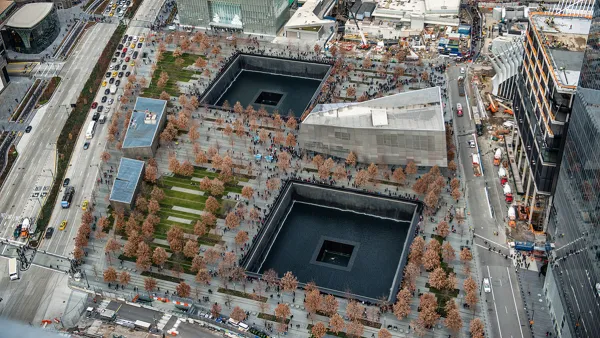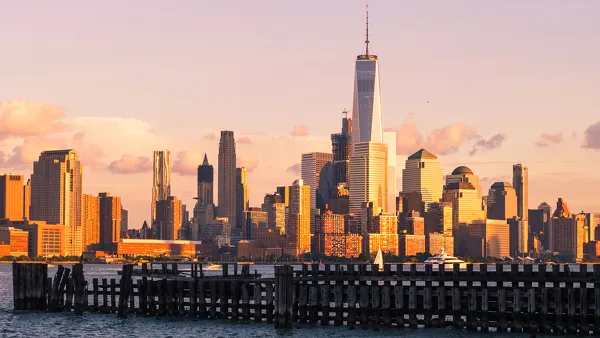After years of debate and negotiation, the redevelopment of the World Trade Center site finally appears to be going forward. But there is considerable doubt as to its economic viability, writes Eliot Brown.
Brown points out that the original WTC took decades to prove viable, and only because of enormous public subsidies. Now the new deal to redevelop the site is also set to put perhaps billions of dollars of public money behind the project -- and without any real demand for vast amount of office space it will create.
"A yearlong battle over the World Trade Center site between private developer Larry Silverstein, the Port Authority and the city seems to be ending...While the details are still under discussion and talks could yet break down, it would put hundreds of millions, if not billions, of additional public dollars at risk, as some combination of the Port Authority, the city and the state would likely back the financing on the bulk of the $4 billion–plus cost of the two privately built towers.
[N]early 7 million square feet, or two and a half Empire State Buildings, [would be] constructed within the span of a few years on one site-all with only a single private tenant in place, China-based Beijing Vantone, for a relatively trivial 190,000 square feet, or six floors."
FULL STORY: The Business of Ground Zero

National Parks Layoffs Will Cause Communities to Lose Billions
Thousands of essential park workers were laid off this week, just before the busy spring break season.

Retro-silient?: America’s First “Eco-burb,” The Woodlands Turns 50
A master-planned community north of Houston offers lessons on green infrastructure and resilient design, but falls short of its founder’s lofty affordability and walkability goals.

Delivering for America Plan Will Downgrade Mail Service in at Least 49.5 Percent of Zip Codes
Republican and Democrat lawmakers criticize the plan for its disproportionate negative impact on rural communities.

Test News Post 1
This is a summary

Test News Headline 46
Test for the image on the front page.

Balancing Bombs and Butterflies: How the National Guard Protects a Rare Species
The National Guard at Fort Indiantown Gap uses GIS technology and land management strategies to balance military training with conservation efforts, ensuring the survival of the rare eastern regal fritillary butterfly.
Urban Design for Planners 1: Software Tools
This six-course series explores essential urban design concepts using open source software and equips planners with the tools they need to participate fully in the urban design process.
Planning for Universal Design
Learn the tools for implementing Universal Design in planning regulations.
EMC Planning Group, Inc.
Planetizen
Planetizen
Mpact (formerly Rail~Volution)
Great Falls Development Authority, Inc.
HUDs Office of Policy Development and Research
NYU Wagner Graduate School of Public Service





























